Curious Bannerstones Used By Prehistoric Native Americans For Unknown Purpose
Jan Bartek - AncientPages.com - About 8,000 years ago, ancient Americans suddenly started producing unusual objects known today as bannerstones. The purpose of these curious artifacts has eluded scholars who are still in the dark trying to find out why the objects were valuable to Archaic people.
Bannerstones have been unearthed in many places, mainly in the Eastern United States.
These baffling ancient objects made from different stone materials vary in size and shape, and some of them are truly unique.
Image credit National Museum of the American Indian - Compilation by AncientPages.com
When knowledge of bannerstones reached the scientific community, scientists assumed these were some ancient tools. However, the fact many unused bannerstones have been found in graves diminished the strength of this theory.
At the Indian Knoll site in Kentucky, archaeologists discovered many unused bannerstones in graves. Few bannerstones found at this place “show signs of use. They are carved of exotic imported stones with an exceptional artistry that exploits the natural colors, patterns, and striations of the stones to afford maximum visual satisfaction." 1
Could these bannerstones have been burial gifts?
Most bannerstones, not all, have a butterfly shape, and they are characterized by a symmetrically carved hole in the center. These ancient American artifacts often have different designs and colors, suggesting they were of spiritual and ceremonial significance.
The name bannerstone “was coined by early twentieth century scholars who thought they must have been mounted on shafts and used as emblems or ceremonial weapons. But just why they were made only during the so-called Archaic period, which ended around 3,000 years ago, has been debated by archaeologists for more than a hundred years.
Some have taken the position that they were not strictly ceremonial and were used as weights that imparted force and accuracy to spear throwers or atlats.” 2
“Atlats are essentially throwing sticks with a handle on one end and a hook on the other that can hold a spear. By drawing the spear thrower back and then hurling it forward, a hunter can use the atlatl as a lever to launch a spear, sending it farther and with more power than of launched only by hand.” 2 This led scholars to think “the bannerstones were meant to somehow increase the efficiency of such spear throwers.” 2
Thera are also researchers who say the bannerstones’ “craftsmanship and materials suggest that they also served as emblems of prestige and status conferred upon hunters coming of age, and as supernatural talismans for increasing the spear-throwers efficacy. They may also have served as emblems of clans or other social units.” 3
Based on years of studies of bannerstones, researchers discovered bannerstones are highly individualized, meaning these objects must have had a special meaning to the people who fashioned them.
Bannerstone produced around 2,000 B.C. The form of the present example is known as a double-notched butterfly. Credit: Public Domain
“The earliest bannerstones were made by the Shell Mound Archaic people around 6,000 B.C.. By around 3,800 B.C., people in the Savannah River Valley had begun fashion them.” 2
The tradition spread among the prehistoric Native Americans until around 1,500 B.C. bannerstones suddenly vanished from archaeological records.
It is unknown why ancient Americans stopped producing bannerstones. Still, scientists noted, “complex stone pipes appear around this time, and that finely made, drilled stone figures depicting birds may have been mounted on atlatls, perhaps occupying the cultural niche once filled by bannerstones.
The skills and aesthetic appreciation Archaic people once lavished on these unique objects changed focus, and bannerstones tradition vanished.” 2
Updated on November 20, 2023
Written by Jan Bartek - AncientPages.com Staff Writer
Copyright © AncientPages.com All rights reserved. This material may not be published, broadcast, rewritten or redistributed in whole or part without the express written permission of AncientPages.com
Expand for references- Berlo, Janet C. and Ruth B. Phillips - Native North American Art.
- Powell, Eric A. "Set In Stone." Archaeology70, no. 4 (2017): 44-48.
- Hero, Hawk, and Open Hand: American Indian Art of the Ancient Midwest and South
- Cooper, Steven R. "An Unusual Bannerstone Feature." Central States Archaeological Journal55, no. 2 (2008): 71
More From Ancient Pages
-
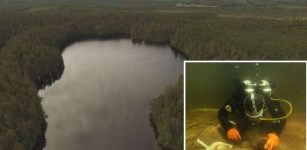 Stone Age Settlement Discovered Underwater In Finland
Archaeology | Aug 9, 2018
Stone Age Settlement Discovered Underwater In Finland
Archaeology | Aug 9, 2018 -
 On This Day In History: Emperor Gordian II Loses The Battle Of Carthage – On Apr 12, 238 AD
News | Apr 12, 2016
On This Day In History: Emperor Gordian II Loses The Battle Of Carthage – On Apr 12, 238 AD
News | Apr 12, 2016 -
 Mysterious Ancient Underground King And Ruler Of The World – Secret Science – Part 2
Ancient Mysteries | Jul 26, 2018
Mysterious Ancient Underground King And Ruler Of The World – Secret Science – Part 2
Ancient Mysteries | Jul 26, 2018 -
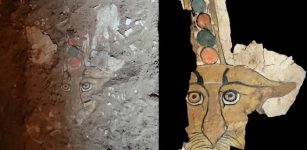 Rare Ancient Leopard Painting Discovered On Sarcophagus In Aswan, Egypt
Archaeology | Feb 25, 2020
Rare Ancient Leopard Painting Discovered On Sarcophagus In Aswan, Egypt
Archaeology | Feb 25, 2020 -
 Strange Mummies Of Venzone: Ancient Bodies That Never Decompose Remain An Unsolved Mystery
Featured Stories | Oct 22, 2018
Strange Mummies Of Venzone: Ancient Bodies That Never Decompose Remain An Unsolved Mystery
Featured Stories | Oct 22, 2018 -
 Makhunik – 5,000-Year-Old City Of Dwarfs Who Hoped To Return One Day
Civilizations | May 28, 2014
Makhunik – 5,000-Year-Old City Of Dwarfs Who Hoped To Return One Day
Civilizations | May 28, 2014 -
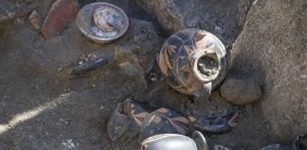 A Rare Pre-Roman Tomb Unearthed In Pompeii
News | Sep 22, 2015
A Rare Pre-Roman Tomb Unearthed In Pompeii
News | Sep 22, 2015 -
 Explore The Giant Gjellestad Viking Ship Burial In This Stunning Virtual Tour
Featured Stories | Apr 6, 2020
Explore The Giant Gjellestad Viking Ship Burial In This Stunning Virtual Tour
Featured Stories | Apr 6, 2020 -
 Controversial Story And Secret Knowledge Of Li Ching-Yuen Who Lived For 256 Years
Featured Stories | Sep 19, 2015
Controversial Story And Secret Knowledge Of Li Ching-Yuen Who Lived For 256 Years
Featured Stories | Sep 19, 2015 -
 They Spoke The Language Of The Gods – Keepers Of Sacred Ancient Knowledge – Part 1
Ancient Mysteries | May 22, 2018
They Spoke The Language Of The Gods – Keepers Of Sacred Ancient Knowledge – Part 1
Ancient Mysteries | May 22, 2018 -
 Magnetic Field From 9,000 Years Ago Teach Us About The Magnetic Field Today
Archaeology | Aug 17, 2021
Magnetic Field From 9,000 Years Ago Teach Us About The Magnetic Field Today
Archaeology | Aug 17, 2021 -
 Rare Gold Foils Found In Ancient Egyptian Tombs At Tel El-Deir In New Damietta
Archaeology | Jul 24, 2024
Rare Gold Foils Found In Ancient Egyptian Tombs At Tel El-Deir In New Damietta
Archaeology | Jul 24, 2024 -
 Erik The Red: Famous Viking Outlaw Who Colonized Greenland And Was Father Of Leif Erikson
Vikings | Jun 16, 2020
Erik The Red: Famous Viking Outlaw Who Colonized Greenland And Was Father Of Leif Erikson
Vikings | Jun 16, 2020 -
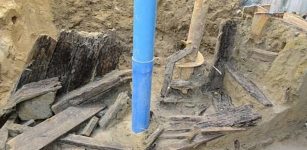 Archaeologists Discover A Secret Escape Tunnel In Copenhagen, Denmark
Archaeology | May 5, 2020
Archaeologists Discover A Secret Escape Tunnel In Copenhagen, Denmark
Archaeology | May 5, 2020 -
 Vainamoinen – Sage, Sorcerer, Adventurer And Friend Of Ilmarinen In Kalevala Myths And Legends
Featured Stories | Nov 16, 2018
Vainamoinen – Sage, Sorcerer, Adventurer And Friend Of Ilmarinen In Kalevala Myths And Legends
Featured Stories | Nov 16, 2018 -
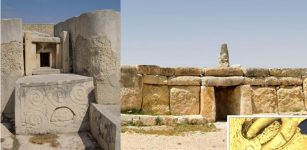 First People To Inhabit Malta Arrived 700 Years Earlier Than Previously Thought
Archaeology | Mar 20, 2018
First People To Inhabit Malta Arrived 700 Years Earlier Than Previously Thought
Archaeology | Mar 20, 2018 -
 Caligula’s Stunning 2,000-Year-Old Sapphire Ring Tells Of A Dramatic Love Story
Artifacts | Jul 10, 2020
Caligula’s Stunning 2,000-Year-Old Sapphire Ring Tells Of A Dramatic Love Story
Artifacts | Jul 10, 2020 -
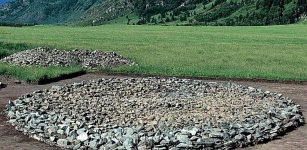 Headless remains related to Huns or Sarmatians puzzle archaeologists in Kazakhstan
News | Aug 30, 2015
Headless remains related to Huns or Sarmatians puzzle archaeologists in Kazakhstan
News | Aug 30, 2015 -
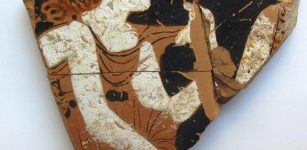 2,700-Year-Old Ancient City Of Limnai On Turkey’s West Coast – Discovered
Archaeology | Nov 22, 2018
2,700-Year-Old Ancient City Of Limnai On Turkey’s West Coast – Discovered
Archaeology | Nov 22, 2018 -
 DNA Research Shows Ancient Britain Was More Diverse Than We Imagined
Featured Stories | Nov 4, 2022
DNA Research Shows Ancient Britain Was More Diverse Than We Imagined
Featured Stories | Nov 4, 2022


